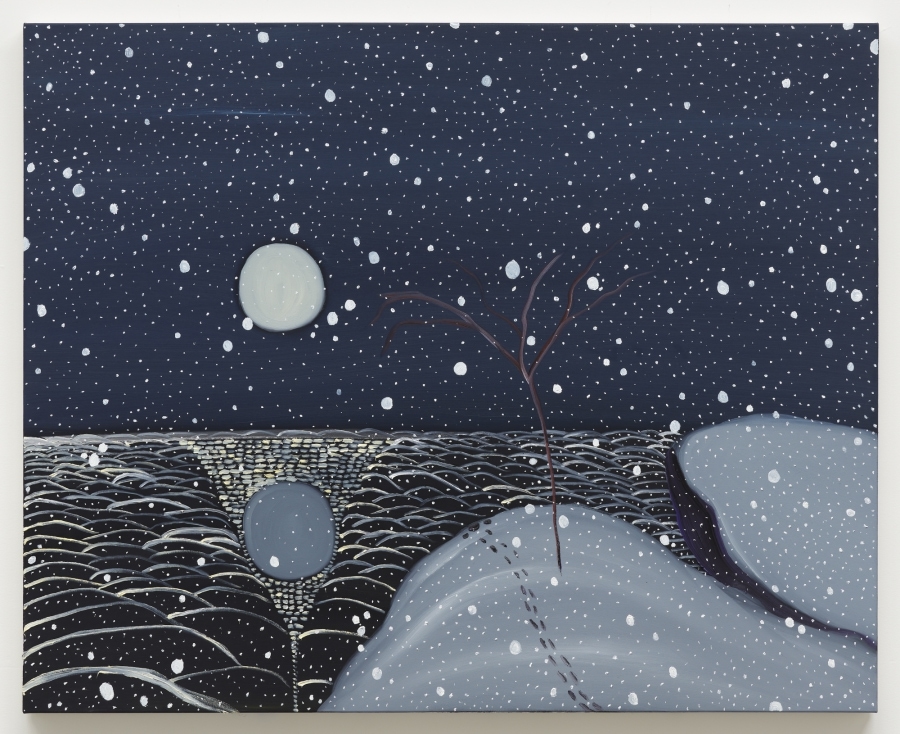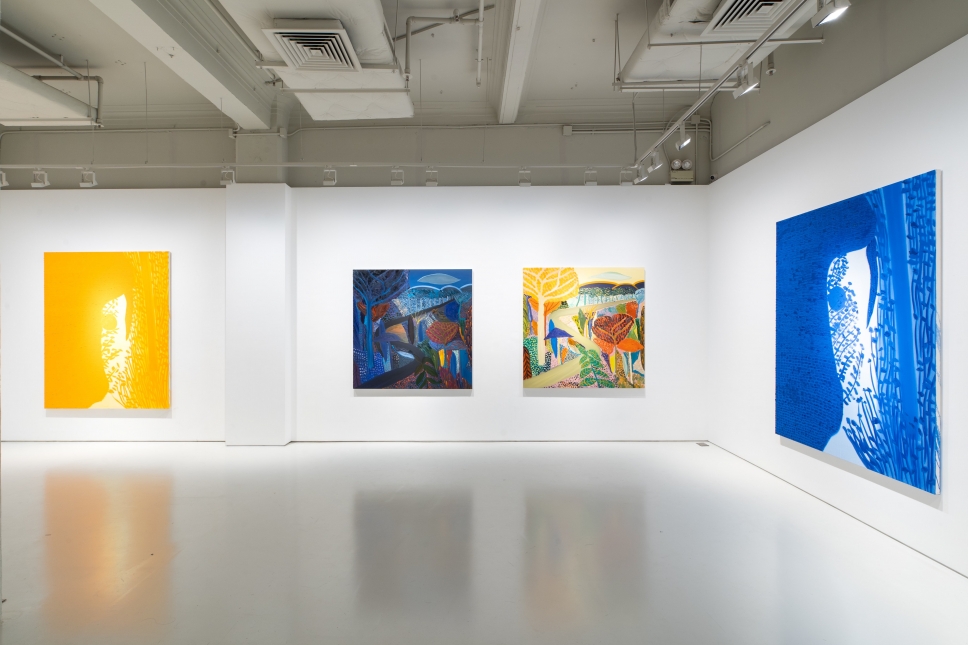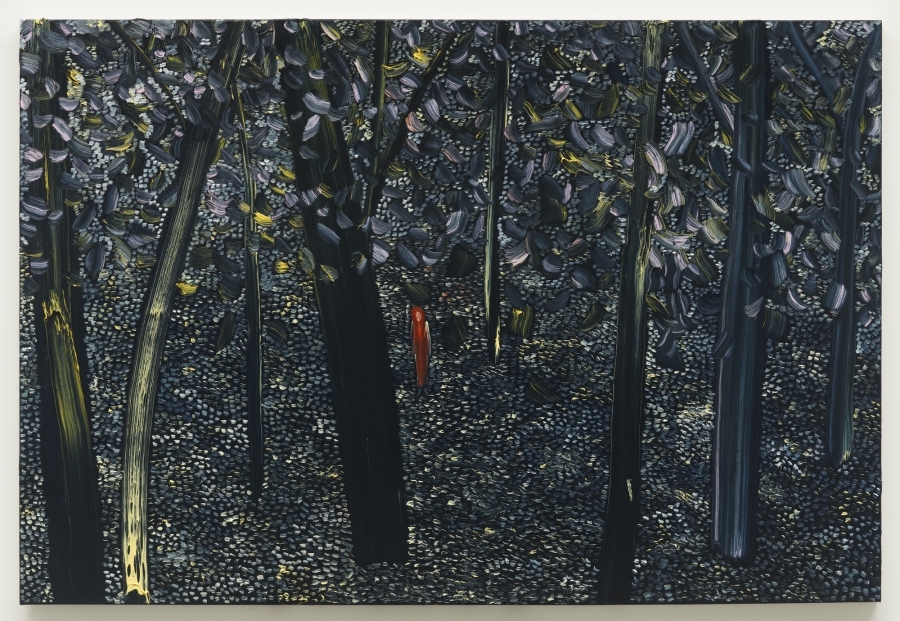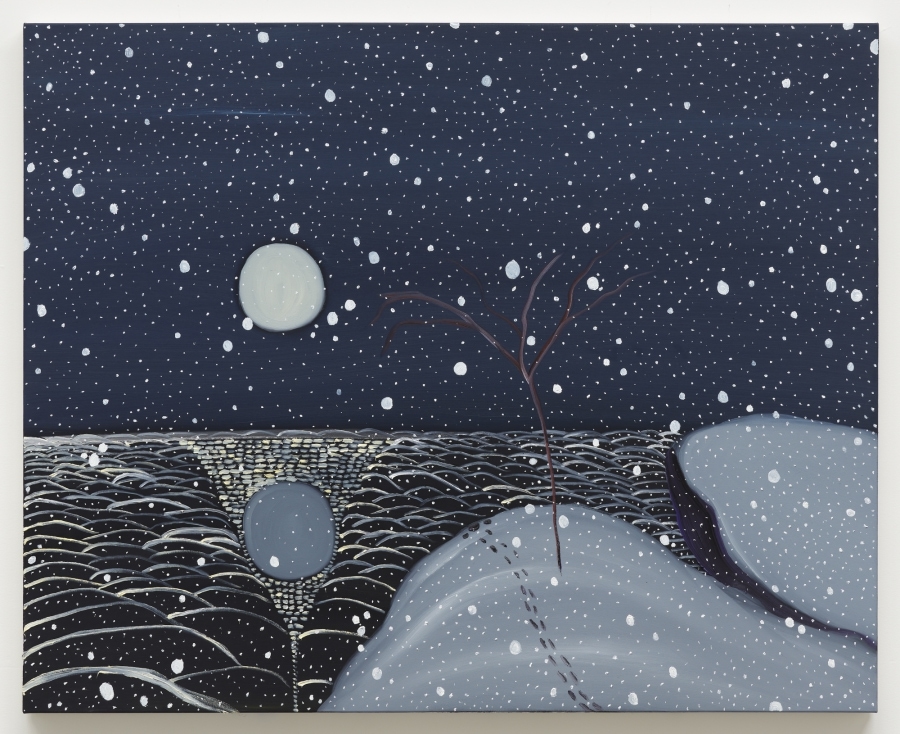[ad_1]

Matthew Wong, Winter Nocturne, 2017, oil on canvas, 48 × 60 inches.
COURTESY KARMA
Matthew Wong, a burgeoning artist early in his career, whose brilliantly colored pictures have reinvigorated landscape painting in recent years, in tones that can feel playful, mystical, and elegiac, often all at once, died on Wednesday, according to his New York gallery, Karma. He was 35. The cause was suicide.
With just three solo shows and a handful of star turns in group exhibitions, Wong established himself as a quicksilver talent, with an almost preternatural sense for creating gripping, idiosyncratic scenes, which he sometimes populated with a solitary figure (or merely a trace of one, as in the footprints that lead over a snow-covered hill in Winter Nocturne, 2017). He borrowed slivers of ideas from painters of the past two centuries, and used them to create worlds that were strange and a little lonesome, exhilarating and new.
Wong, who was based in Edmonton, Canada, came to his medium late. He was born on March 8, 1984, in Toronto and earned a bachelor’s degree in cultural anthropology from the University of Michigan, Ann Arbor in 2007, before moving to Hong Kong, where he had grown up. He “spent the next two years working a variety of desk jobs with no real sense of purpose or commitment in life,” he told Neoteric Art in 2014.

Installation view of “Matthew Wong: Day by Night” at Massimo De Carlo, Hong Kong, 2019.
COURTESY MASSIMO DE CARLO
But he enjoyed shooting photographs, and in 2010 enrolled in the City University of Hong Kong School of Creative Media’s M.F.A. photography program. It was not an ideal experience for him. “Even towards the end of my degree I felt I had gained no real skills or prospects that could take me forward in the professional world,” he said in that same interview. And so, in 2012, “I considered drawing for the first time—maybe as a last resort to find something to hold on to,” he went on. “At first I just bought a cheap sketch pad along with a bottle of ink and made a mess every day in my bathroom randomly pouring ink onto pages—smashing them together—hoping something interesting was going to come out of it. Pretty soon that was the only activity that sustained me in my daily routine.”
While also writing poetry regularly, Wong threw himself into painting and drawing, “using the local library and the internet as my tools for self-education in the medium,” he told Art of Choice in 2018. He was a vigorous Facebook user, participating in discussions on the profiles of critic Jerry Saltz and others; the writer Eric Sutphin has recalled that Wong’s page at the time was “a virtual salon, with artists, dealers, curators, and critics carrying out spirited painting-centric discussions on his posts.” His works in these first few years took the form of energetic gestural abstractions, sometimes with only the faintest hints of representation.
The artist’s breakout moment came with a thrilling one-person outing at Karma in New York in 2018 that consisted of large-scale oil landscapes in a vaguely Post-Impressionist mode—they are deeply virtuosic but never showy—and disarmingly spare watercolors on paper. These works are built with flat planes of color that still manage to be loose and vital. The Road (2018) suggests a wild Charles Burchfield painting filtered through Pointillism, Somewhere (2018) a spectral forest rendered in amber-orange tones against a midnight blue field, with small people and animals scattered throughout. Saltz termed the exhibition “one of the most impressive solo New York debuts I’ve seen in a while.”

Matthew Wong, Bowl of Cherries, 2017, watercolor on paper, 9 × 12 1/8 inches.
COURTESY KARMA
Various Wong canvases from the past few years seem to allude to Matisse and the Fauvists, mid-to-recent David Hockney, Marsden Hartley, William Scott, Florine Stettheimer at her most serene, and Albert York at his most otherworldly. But, as many have written, it would be wrong to say that he was indebted to any particular individuals—his work always slips away from easy reference into fresh fertile territory.
And Wong was voraciously curious about art and artists. “I am a bit of an omnivore for sights, sounds and ideas and am always on the lookout for perspectives,” he told Art of Choice in 2018, citing as people he returned to again and again Edvard Munch, Shitao, Xu Wei, Lee Lozano, Vincent van Gogh, Lois Dodd, Alex Katz, Kanye West, and many more.
Wong said that he worked by instinct, without preparatory drawings, and that he came up with ideas by daydreaming, watching movies, and taking walks. “Sometimes I could just be making marks almost haphazardly and at a certain point I step back and realize I have a finished, satisfactory image that I have no idea how I managed to pull that one off,” he told Studio Critical when he was just getting started, in 2013. “I’m just going with my gut at the moment. But often times, my gut also cancels itself out and I keep painting over an image with a totally different image, and work like this can go on for months before a single surface is resolved.”

Matthew Wong, Figure in a Night Landscape, 2017, oil on canvas, 48 × 72 inches.
COURTESY KARMA
The end result of that obsessive practice was an art that made everyday life majestic—teeming with energy and heart, even while acknowledging that it can be desolate at times—and he aimed for his work to have broad appeal. “I would like my paintings to have something in them people across the spectrum can find things they identify with,” he told Art of Choice. “I do believe that there is an inherent loneliness or melancholy to much of contemporary life, and on a broader level I feel my work speaks to this quality in addition to being a reflection of my thoughts, fascinations, and impulses.”
When asked by Neoteric Art in 2014 to define his medium of choice, he proposed that “painting is located in the space of not knowing.” Later in the article, while describing his life up then, he said, “Would I be able to go through life without painting? I guess we’ll never know.”
[ad_2]
Source link

